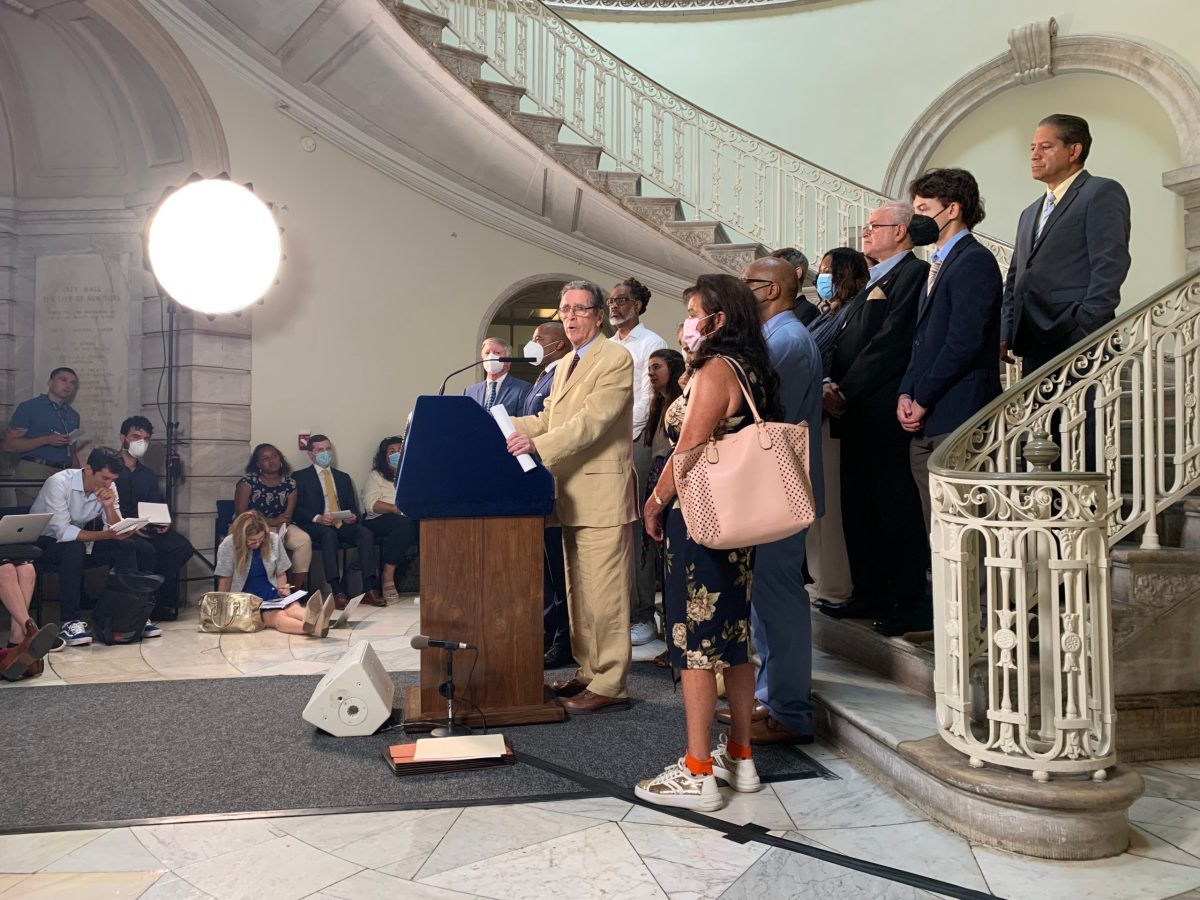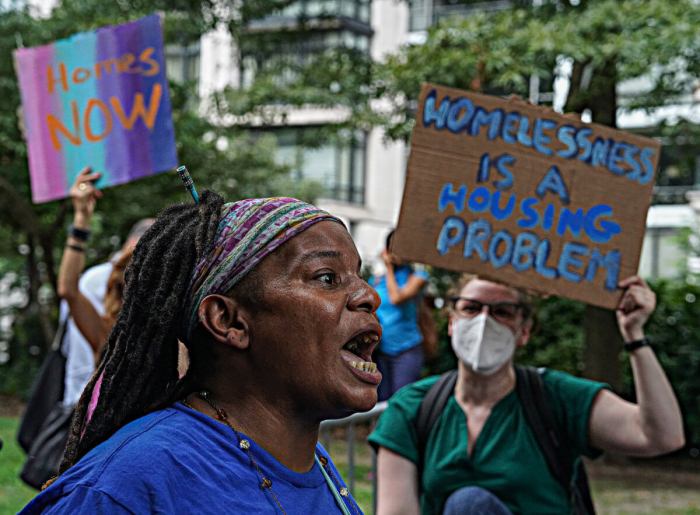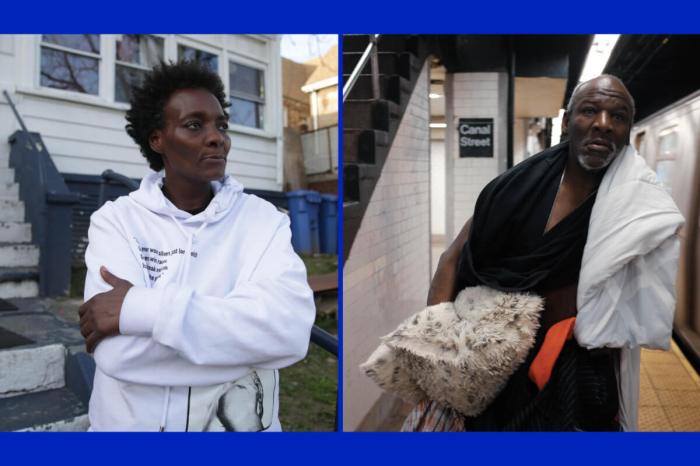Mayor Eric Adams announced Tuesday his administration is launching a new volunteer homelessness outreach program to connect those living on the streets with city resources.
The new program – dubbed the Street Homeless Advocacy Project (SHAP) – will be led by former executive director of the New York Civil Liberties Union Norman Siegel and Community Healthcare Network president and Coalition for the Homeless founder Robert Hayes. Also leading the program are the Interfaith Assembly on Homelessness and Housing, The New York Legal Assistance Group, and the Doe Fund.
SHAP volunteers will be trained to go out in conjunction with existing homeless outreach teams, engage with unhoused individuals and offer them services including safe haven beds and mental health programs.
Adams said it’s his responsibility as mayor to get people off the streets and placed into permanent housing. And this program, which will launch in early August, is part of his strategy to achieve that mandate.
“Starting in early August, for those who are harder to reach, we’ve developed a new strategy in close coordination with advocates and partners,” Adams said. “We’re going to take an approach that other administrations haven’t tried. We’re going to connect one-on-one, heart-to-heart with New Yorkers that are living on the street.”
The mayor invited anyone who’s been critical of his response to the homelessness crisis so far to volunteer with SHAP.
“I’m calling on all of those who are out there that have Tweeted and Instagramed and Googled and wrote articles, I’m calling on all of you now to get skin in the game,” Adams said. “Come and volunteer. Because when I hear someone complain the first [thing] I’m going to ask is, ‘did you volunteer?’”
SHAP will start as a pilot program, Siegel said, where teams will be dispatched over a 10-day period in three locations in Manhattan, and one in the Bronx, that have particularly high concentrations of homeless individuals. If the program is successful, he added, it will expand citywide.
Adams made it clear SHAP is intended as a compliment to, rather than a replacement of, the city’s current homelessness outreach efforts. SHAP is intended to fill in the gaps left by the city’s existing programs, he added, by connecting those experiencing homelessness who are “harder to reach” with the resources they need.
Siegel said they’re going to make an effort to recruit CUNY students and young people for this program in particular but encouraged anyone and everyone to apply.
“It is time for New York to create teams of concerned residents: students – hopefully you’re listening, formerly homeless people, social workers, doctors, lawyers, and people from all walks of life, including the private sector and for us to venture into our streets regularly and learn about the homeless,” Siegel said. “Who they are, why they are homeless and what they need to do to come inside.”
After applying and being accepted to the program, Siegel said, volunteers will undergo training led by housing advocates on the history of homelessness, important legal cases and how the city’s shelter system works. Plus, volunteers will learn how to engage with homeless individuals on the street through role playing exercises.
Not everyone is a fan of the SHAP. Shortly after Adams announced the new program, homelessness advocacy organization Housing Works – which also operates several homeless shelters throughout the city – put out a statement saying the new program won’t put a dent in the homelessness crisis.
“Homeless New Yorkers are in a crisis that volunteers can’t solve,” the statement read. “We don’t have a shortage of outreach, we have a shortage of transitional and permanent affordable housing that is safe, dignified, and operated using evidence-based low-threshold practices.”
















